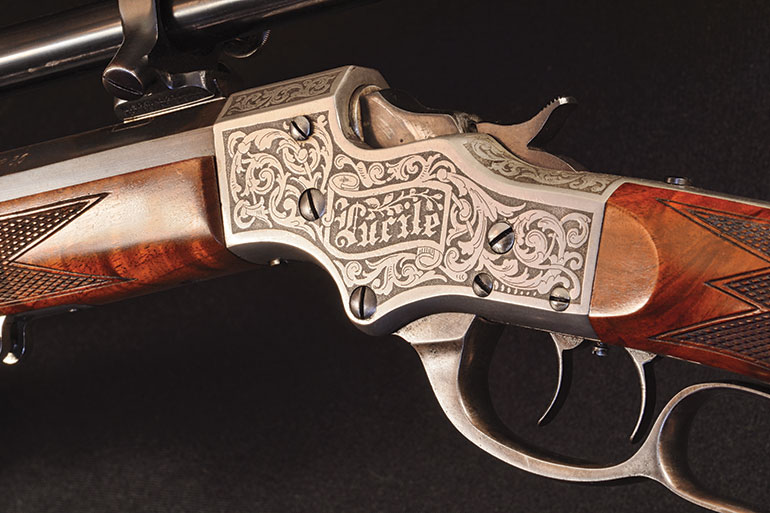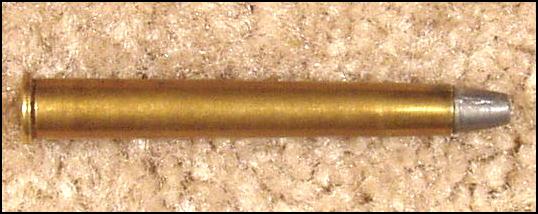Most shooters like a rifle with character, some history, and, to add spice, a little mystery. Lucile – for that is her name – has all three.
 Who could Lucile be? She might be the rifle herself or one of the woodchucks depicted on the other side of the action or the first owner’s paramour. We will never know for sure, but Terry likes to speculate.
Who could Lucile be? She might be the rifle herself or one of the woodchucks depicted on the other side of the action or the first owner’s paramour. We will never know for sure, but Terry likes to speculate.
If she were a girl, you could say I met her at a dance, twirled her once around the floor, then watched her leave with another guy. Three months later, a sadder but wiser girl, we met up again, and this time she came home with me. Lucile being a rifle, that’s not quite what happened, but close enough. It was an auction, not a dance floor.
Here’s what I know about her history. She’s a Stevens Model 52, chambered in .28-30-120, made to special order around 1902. She has a No. 44 action, which was discontinued in the higher grades around 1903, but the .28-30 was only introduced in 1901, so that pinpoints it nicely. The Model 52 was one of the finest of the Stevens target rifles, equipped with lovely walnut, a palm rest, and all the frills of the best Schützens. Somewhere along the line, she was fitted with scope blocks and now sports an 8X Lyman Junior Targetspot.
Now the mystery. Who ordered her? And who was Lucile? The name is engraved in old English lettering, in a banner on the left side of the action, surrounded by scroll. And on the right side, there are two woodchucks under a tree. One is down nibbling clover, while the other is standing up and gazing intently, as all good woodchucks do.
Was Lucile the first owner’s wife, girlfriend, daughter, paramour? Or was the rifle owned by Lucile herself? Or is Lucile one of the woodchucks? (Personally, I rather like that idea.)
The embellishment very likely was begun by etching the steel to get the general outline, then sharpening it with engraving before finally nickel plating. Although the plating is beginning to fray here and there, overall it’s in remarkable condition. It may or may not have been delivered from the factory with iron target sights.
Impossible to tell now, but someone was a serious shooter because it is fitted with a palm rest and the scope, and it is chambered for the darling target round of that era, the .28-30-120 Stevens.
 The rifle is a Stevens Model 52 built on the No. 44 action, most likely in 1901 or ’02, and chambered for the .28-30-120 Stevens.
The rifle is a Stevens Model 52 built on the No. 44 action, most likely in 1901 or ’02, and chambered for the .28-30-120 Stevens.
The scope is an 8X Lyman Junior Targetspot.
The Stevens records were all destroyed in a fire, shortly after World War I ended in 1918 and before the company was acquired by Savage. There is very little official written material about models and features, to say nothing of serial numbers and written orders for individual rifles. This is the polar opposite of Winchester and Colt, where it is now de rigueur for auctioneers to pitch the item as coming “with the factory letter” giving details of its origins and life on the frontier.
In a way, it seems to me, we almost have too much information about some guns. Sure, we all wish they could talk, to tell us where they’ve been and what they’ve done, but as with most things, we should be careful what we wish for. Do I really want to know who Lucile was or why the rifle was named that? Or is it more fun fantasizing about possible scenarios? In this case, I think it is the latter.